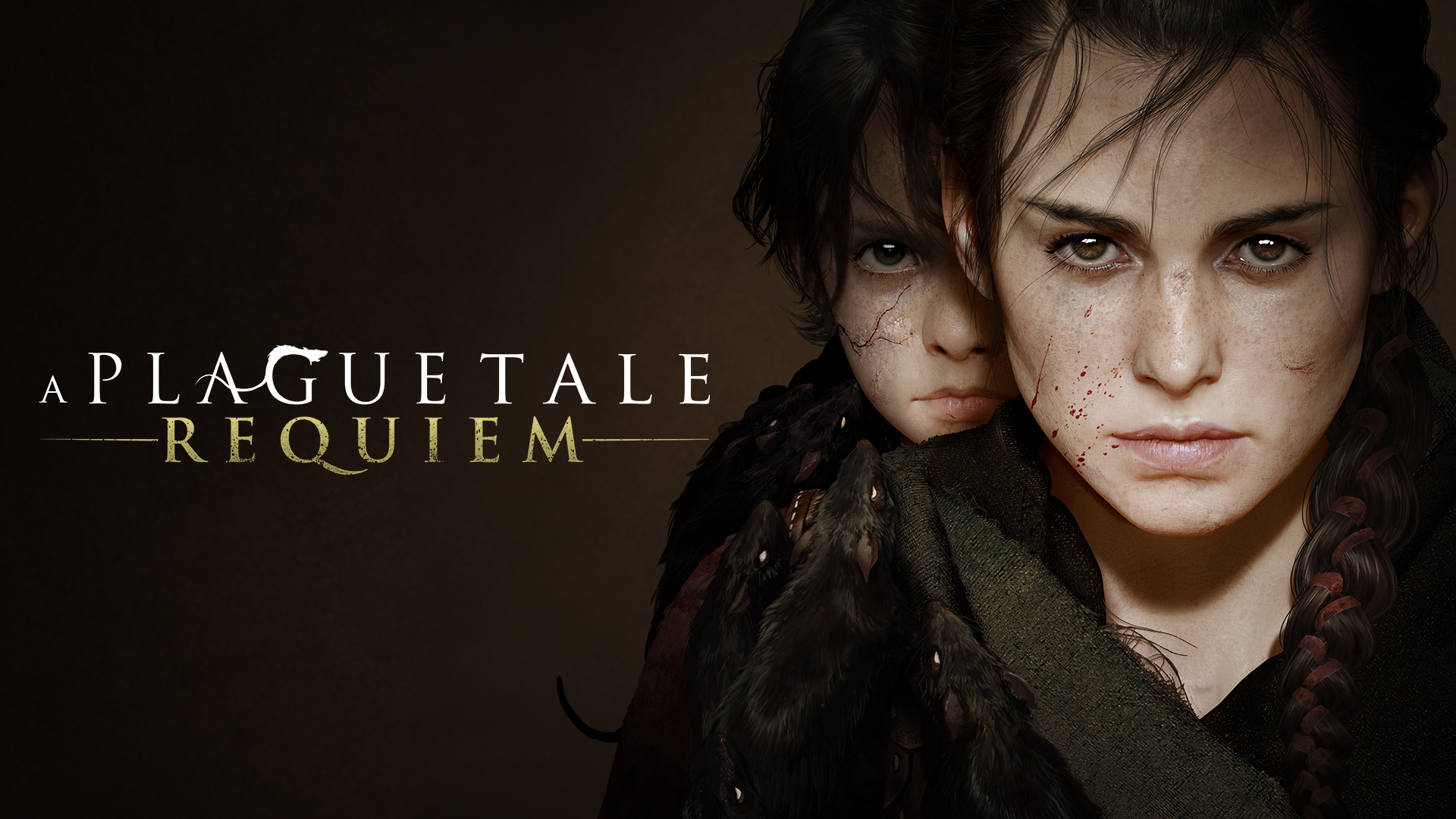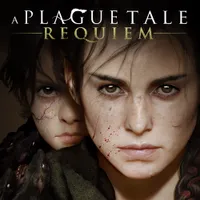Windows Central Verdict
A Plague: Tale Requiem is a positively gorgeous, perfectly expanded sequel to A Plague Tale: Innocence and is a great conclusion to the story of Amicia and Hugo. Despite some minor complaints and a world that sometimes feels too lifeless, A Plague Tale: Requiem is an absolute must-play title in 2022.
Pros
- +
+ Visuals are stunning, brimming with lush environments and gorgeous vistas
- +
+ Gameplay is greatly improved with countless expansions and additions
- +
+ Rats are more numerous and dangerous than ever before
- +
+ Amicia and Hugo's story reaches a powerful conclusion rife with emotion and character
Cons
- -
− The world often feels lacking in dynamism thanks to lifeless NPCs
- -
− Visuals and performance are occasionally inconsistent
Why you can trust Windows Central
More than three years since A Plague Tale: Innocence introduced us to Amicia and Hugo de Rune, siblings fated to journey through a decaying world plagued by disease and rats, Asobo Studio returns with A Plague Tale: Requiem to finish the story. Requiem shows players more of this hauntingly beautiful universe filled with death and loss, dropping support of last-gen consoles to push its visual fidelity to all-new heights.
In many ways, A Plague Tale: Requiem aims to be the perfect sequel, with carefully expanded gameplay, a more ambitious scope, a host of quality-of-life improvements, and the aforementioned graphical enhancements all coming together to make Requiem one of the most interesting and heartbreaking games I've played this year. Anyone who began with Innocence and is invested in the fate of its characters can't afford to miss this follow-up.
A Plague Tale: Requiem doesn't always land nimbly on its feet, with some inconsistencies in the visuals and performance. However, the areas in which it excels confirm Asobo Studio's latest stealth-based action-adventure title as a worthy successor to A Plague Tale: Innocence and one of 2022's best Xbox games. Just beware of the rats, as they're more terrifying and threatening than ever before.
Disclaimer: This review was made possible by a review code provided by Focus Entertainment. The company did not see the contents of the review before publishing.
A Plague Tale: Requiem review — World and story
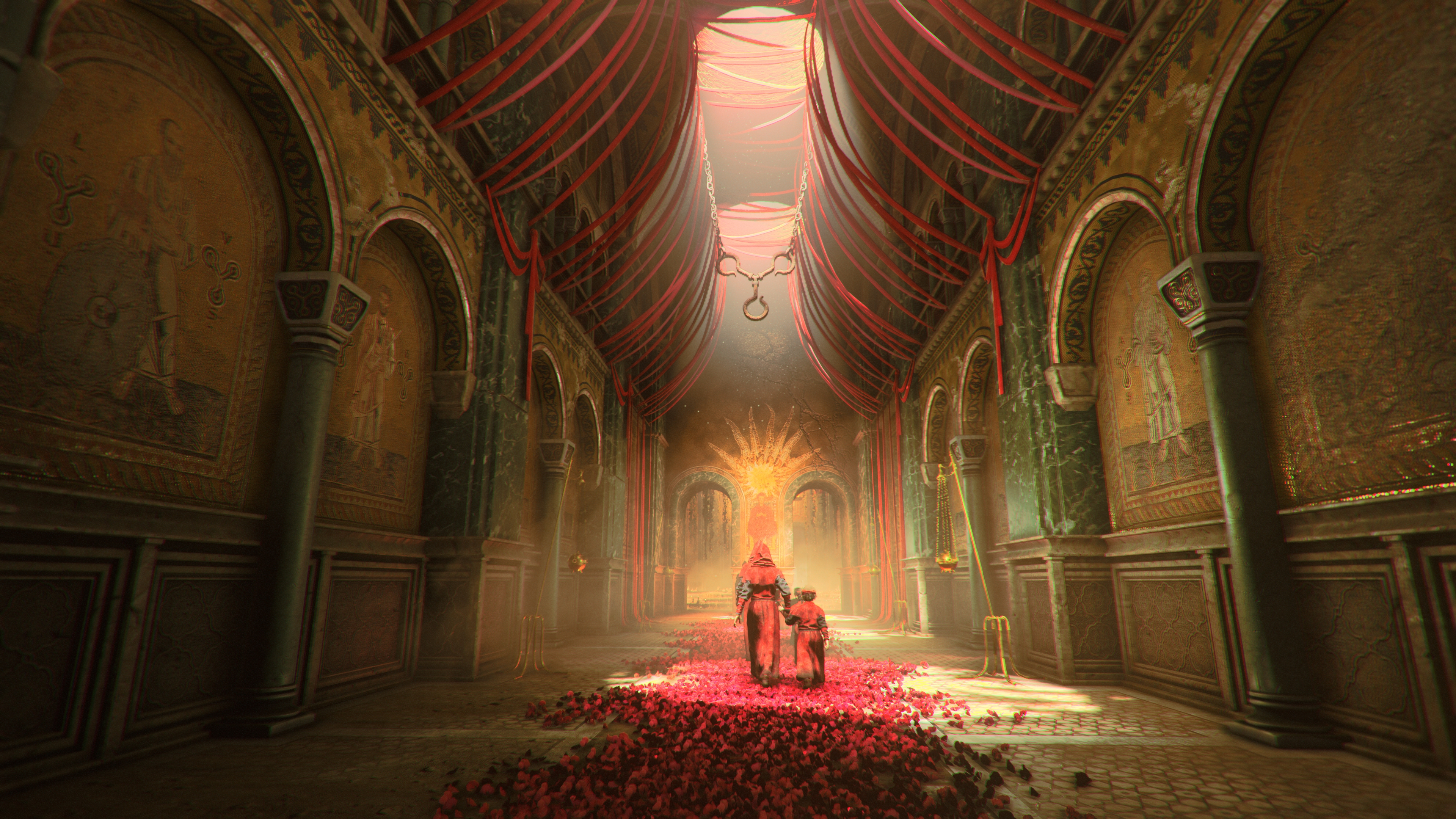
Disclaimer: This review includes spoilers for plot points and narrative themes discussed in A Plague Tale: Requiem's predecessor, A Plague Tale: Innocence.
Six months have passed since the events of A Plague Tale: Innocence, and Amicia and Hugo — still accompanied by Lucas and reunited with their mother, Beatrice — have been traveling in search of a Magister of The Order, an ancient organization of alchemists knowledgeable in the Prima Macula. Hugo's blood is still corrupted by the ancient disease that drives the ravenous and carnivorous hordes of plague-riddled rats roaming the world, and matters are only growing worse over time. The tired group of unfortunate souls is intent on finding a way to cure Hugo, halting the inexorable progress of the Macula and the plague it brings.
| Developer | Asobo Studio |
| Publisher | Focus Entertainment |
| Genre | Action-adventure, stealth |
| Install size | ~51.1 GB |
| Players | Single-player |
| Playtime | 22+ hours |
| Release date | Oct. 18, 2022 |
| Retail price | $60 |
| Platforms | Xbox Series X|S, PS5, Switch, PC (Steam) |
| Xbox / PC Game Pass | Xbox Series X|S, PC, Xbox Cloud Gaming |
| Reviewed on | Xbox Series X |
Unfortunately, things do not go as planned. It quickly becomes apparent that Hugo's condition continues to deteriorate, and the gruff Magister Vaudin is not equipped to care for the cursed child. Instead, Amicia and Hugo set off to discover the truth behind the mysterious dreams that have been haunting Hugo for weeks — dreams that hint at an ancient island possessing the answers Hugo needs. What follows is an arduous journey greater in length and with even higher stakes than in A Plague Tale: Innocence. It took me nearly twice as long to complete A Plague Tale: Requiem versus its more modest predecessor, and my efforts brought me to the definitive conclusion of the story of the de Rune family that began in 2019.
All the latest news, reviews, and guides for Windows and Xbox diehards.
Similar to Innocence, A Plague Tale: Requiem revolves around its characters and the charming, decidedly human, and emotionally touching interactions between them. Amicia, Hugo, Lucas, and all the other important characters you meet on the way suffer, survive, and grow together, with a huge variety of conversations between the cast unfolding as you progress. Voice acting feels as if it has stepped up in quality over Innocence, while facial motion capturing more convincingly conveys the emotions of the characters throughout Requiem.
A Plague Tale: Requiem revolves around its characters and the interactions between them.
Characters don't just interact with each other; as you explore the world of A Plague Tale: Requiem, you'll witness beautiful moments with NPCs, environments and locations, and various collectibles like dynamic souvenirs, flowers, and feathers. It's wonderful to watch the development of every character, with each possessing a wholly unique and fully realized personality.
In these ways, the added length of A Plague Tale: Requiem is a major boon. Innocence, in comparison, sometimes struggled to fairly represent its side characters with the limited time it had. In other ways, however, it sometimes feels that A Plague Tale: Requiem drags on too long for the sake of delivering a larger, more ambitious title. The story alternates between "Maybe things are better now" and "Oh no, everything isn't better" several times throughout. It resulted in times when it felt like something happened to pad out gameplay sections, rather than it being necessary to the progression of the story.
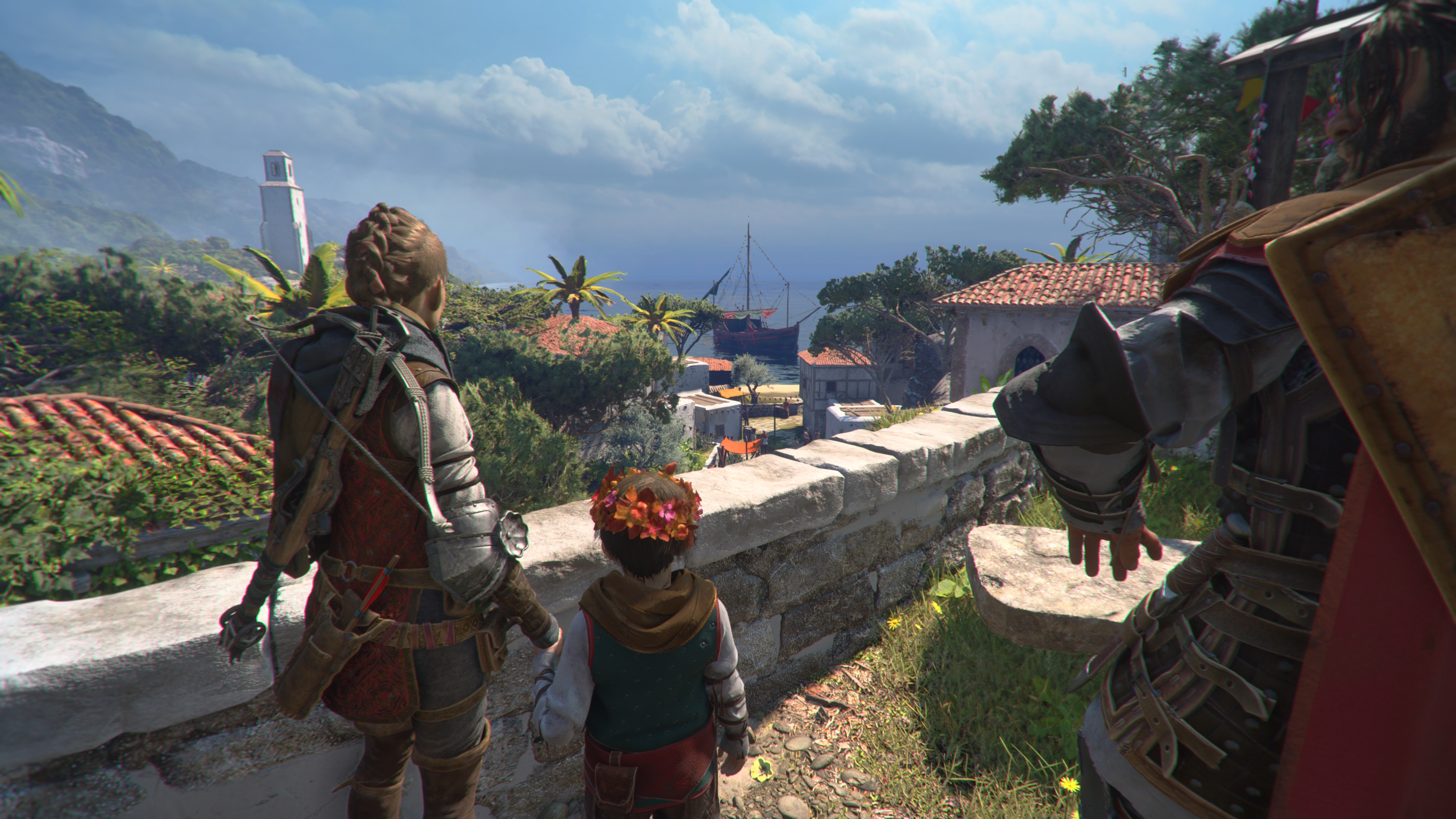
The story of A Plague Tale: Requiem takes place in 14th-century Europe, with a world that is achingly beautiful thanks to the illustrious visuals of the game. While there is plenty of life and vivid color to be found in Requiem, though, it is also an aggressively macabre game. Countless casualties are a result of the ongoing plague, and Asobo Studio isn't afraid to throw players into the middle of the worst and most disturbing of that carnage. You will witness the results of a deadly disease to which there is no cure, which indiscriminately takes the lives of adults and children. It explores the aftermath of the voracious rat hordes, which are capable of destroying entire cities and consuming the populations within. The cruel and remorseless actions of humans, dominated by greed, delirium, and desperation, loom large.
There are moments of joy in A Plague Tale: Requiem, but this game will not leave you with happy or positive thoughts — it rests heavy on the mind, and the ordained conclusion of Amicia and Hugo's interminable journey is powerful, heartbreaking, and emotional. It's a wonderful, humbling tale of human struggle against the ominous forces of an indifferent universe, and I'm very glad I experienced it. Sadly, I don't feel as if the world of A Plague Tale: Requiem always matches the scale of its story and the events within it; what should feel dynamic and bustling often feels static and silent.
The world of A Plague Tale: Requiem often feels static and silent instead of dynamic and bustling.
There are numerous instances in A Plague Tale: Requiem where players will explore inhabited settlements, towns, and cities filled with people. In still images, these hubs of human activity certainly look the part, but in motion, Requiem failed to make me feel as if its world was truly alive. The human NPCs of Requiem are perpetually locked in static animations and simple loops, destined to forever mime a living creature with the aid of intermittent, too-seldom clips of disjointed conversations. The only exceptions are when the main cast of characters directly interact with these person puppets, a dissonant relationship that results in the world of A Plague Tale: Requiem feeling as if it's simply waiting for the player to reach the next story checkpoint or interaction.
I recognize that crafting a believable world occupied by AI-powered NPCs is extremely difficult in and of itself, without considering the incredible achievement that is the rest of A Plague Tale: Requiem. Still, the unsettling almost-silence and isolated movements of what's supposed to be a busy and thriving community of people took away from its best moments. If you are particularly susceptible to the "uncanny valley" that aim to appear human but somehow fail to succeed, you'll likely notice the vast chasm that separates the beautifully animated, wonderfully constructed interactions of the core cast of characters from the sea of forgetful, lifeless NPCs that surround them.
A Plague Tale: Requiem review — Gameplay and progression

A Plague Tale: Innocence drew players in with stealth, action-adventure gameplay supported by simple puzzles and exploration elements. A Plague Tale: Requiem will feel immediately familiar to players of the previous entry, but with countless minor expansions and additions that make the gameplay more engaging and reactive.
Amicia is far more capable than before, with new alchemy combinations and uses, a deadly crossbow for use in puzzles and combat, and other abilities that allow her to interact with the environment in new ways. Secondary characters also return with unique abilities and uses during their segments, with Amicia able to issue simple commands to navigate puzzles and areas more effectively.
The collection of enhancements in A Plague Tale: Requiem adds up to a major improvement over its predecessor.
Players will have to utilize the entire arsenal of assorted abilities and tools to progress through A Plague Tale: Requiem. Exploration of each area, which are now far larger and less linear than in Innocence, is crucial to obtain valuable resources and discover various paths to victory. Combat and stealth elements are more nuanced than in Innocence, with players able to approach both rats and human enemies in a variety of different ways.
Ultimately, Requiem is more receptive to the ideas and intentions of players, with more tools and abilities opening up a plethora of new possibilities for clearing each obstacle and progressing through the story. There are still a fair amount of linear sections in Requiem in which your choices are inherently limited, but the majority of the game players are granted more freedom than Innocence allowed. Each addition is subtle or minor on its own, but the collection of enhancements accumulates as a major improvement over Requiem's predecessor.
These gameplay additions also benefit from massive strides in accessibility, approachability, and simple quality-of-life, all of which I'll cover more extensively in a later section. Put simply, if you loved the gameplay of A Plague Tale: Innocence — or even if you felt it was almost great but just missed the mark — Requiem is more of the same but better in every way.
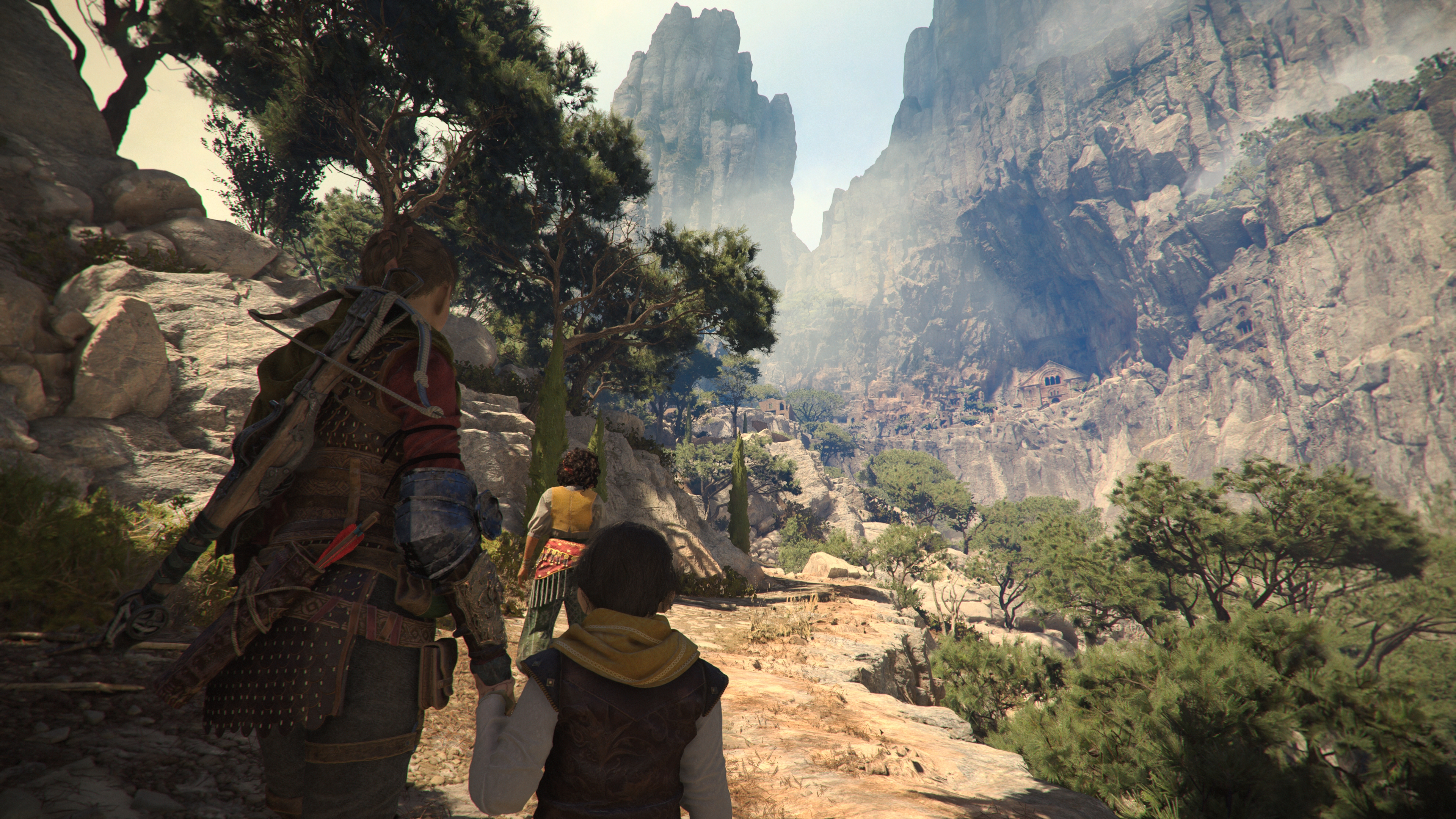
A Plague Tale: Requiem also features more in-depth progression mechanics to accompany its expanded gameplay. Players will still be able to collect resources and find workbenches to upgrade their tools and equipment, but there are now abilities that are passively gained through play. The three categories of skills are each tailored to a specific style of play; do you prefer to use stealth to sneak past your enemies, personally dispatch enemies with violence, or take advantage of the environment to incapacitate or eliminate threats?
As you progress past each area, the game will reward you with progression in the skills you used to succeed. As you cross milestones in each of the three categories, you'll earn new abilities that enhance Amicia's capabilities further. This could mean being able to throw farther with your bare hands, being able to more effectively use the environment to your advantage, recovering faster from enemy blows, and much more. In total, there are 12 abilities waiting to be unlocked, with players liable to become specialized in their preferred playstyle by the end of the game.
Similar to A Plague Tale: Innocence, Requiem doesn't immediately throw players in with every tool available at their disposal and instead steadily introduces new mechanics and features as time goes on. This helps prevent players from being overwhelmed by options but also ensures that Amicia's abilities continually expand throughout Requiem's story alongside passive skill gains and purposeful upgrades.
A Plague Tale: Requiem review — Visuals and performance

It is not an exaggeration that A Plague Tale: Requiem is one of the best-looking games I've played in recent memory. A Plague Tale: Innocence was hardly an ugly title, possessed of beautiful visuals even before it was Optimized for Xbox Series X and Series S consoles, but it was clear at the time that the title had to restrain its graphical ambitions. With its successor, that no longer feels like the case.
Asobo Studio has upped the ante with higher-quality, crisper textures across almost every surface, environments lush with dense foliage and absurd detail, and stunning vistas and landscapes around every corner. Lighting feels improved, with impressive reflections even without ray tracing on consoles and glorious contrasts between darkness and sources of burning light. It also has beautiful environmental lighting that shines even during adverse weather events and while exploring underground settings.
It only takes a few moments inside A Plague Tale: Requiem to understand why the action-adventure sequel drops support for older, previous-gen consoles in favor of Xbox Series X|S, PS5, and PC. Areas are significantly larger and more open, the horizon is more impressively rendered with greater amounts of detail, and everything loads considerably faster thanks to the SSD powering the latest consoles.
It's easy to see why A Plague Tale: Requiem is exclusive to current-gen platforms.
In addition to these improvements, rat swarms — which were already imposing with up to 5,000 rats in A Plague: Tale Innocence — have been increased to a maximum of 300,000 simultaneous rats on screen. These swarms are more intelligent, now better able to avoid or overcome obstacles and light sources, while larger hordes are capable of wreaking havoc on the environment, buildings, and even entire towns and cities.
Character models have also seen improvements, with texture-rich clothing, motion-captured facial movements, and a distinct lack of distracting cloth and equipment clipping (with the exception of in-game cutscenes, for some reason). Amicia, Hugo, and the entire supporting cast of characters are meticulously rendered. Some games beg to be captured via screenshots more than others, and Requiem is one such title; by the end of my playthrough, my Xbox was filled with delightful images of Amica and Hugo during their adventures.
A Plague Tale: Requiem is gorgeous, even when its world is dark, morbid, and full of death and ruin. There is a consistent contrast between picturesque landscapes full of life and saturated colors and the persistent shadow that plagues this depressing world. No matter the situation or the environment in which it's happening, Asobo Studio has ensured A Plague Tale: Requiem never fails to awe.

While the game is mostly packed with unending detail and carefully wrought animations for interactive sections and moving parts, I noticed several obscure areas in which textures appeared noticeably fuzzier or lower quality than the rest of the game. I also observed a fair amount of clipping, a visual discrepancy that is, admittedly, infamously difficult to solve in video game development.
Still, clipping in A Plague Tale: Requiem occasionally felt more noticeable than the norm; plants and foliage growing through surfaces; hair and cloth behaving erratically during cutscenes, and some environmental details sinking into other elements. These visual complaints were minor and ultimately didn't detract from what is still one of the most graphically impressive games of 2022.
I can't as unequivocably praise A Plague Tale: Requiem's performance as I can its visuals, but Asobo Studio did a solid job ensuring the game runs mostly great. The title on Xbox Series X is rendered at a crisp 4K resolution and runs at 30 FPS, which may be disappointing for many players who prefer a smoother 60 FPS. Unfortunately, there is no alternative "performance mode" that sacrifices resolution and other graphical settings to eke out more performance, so players are stuck with a meager 30 frames per second.
Despite minor complaints, A Plague Tale: Requiem is one of the most graphically impressive games of 2022.
Still, it was difficult for me and a fellow Windows Central writer to tell with absolute certainty if A Plague Tale: Requiem was running at 30 FPS before Asobo Studio provided the official performance target, a testament to how well the game runs. Unlike first-person shooters, platformers, or other games that require fast reaction times and impeccable performance, A Plague Tale: Requiem doesn't suffer from a more "cinematic" framerate at all. It is a compromise that allows for the game's unparalleled visuals, and it's one that I'm more than happy to accept in this case.
However, matters aren't perfect here, either. I did encounter several instances of dropped frames, stutters, and moments when A Plague Tale: Requiem noticeably dipped below that 30 FPS mark. Fortunately, these infrequent performance issues always seemed to appear during transitional travel sections — presumably when the game was loading the upcoming area in the background — and almost never in potentially dangerous areas or around enemies. Once again, I'm comfortable relegating these problems to the "minor complaint" section.
As for overall stability, I'm happy to report that A Plague Tale: Requiem feels polished and bereft of major bugs and issues. I was informed of a handful of known issues in the game, some capable of blocking story progression, but I never encountered any of them (and they'll be fixed by the game's day one patch, according to Asobo Studio). Overall, A Plague Tale: Requiem absolutely nails the fundamentals of visual fidelity and stability, despite the lack of alternative graphics or performance modes.
A Plague Tale: Requiem review — Accessibility and approachability
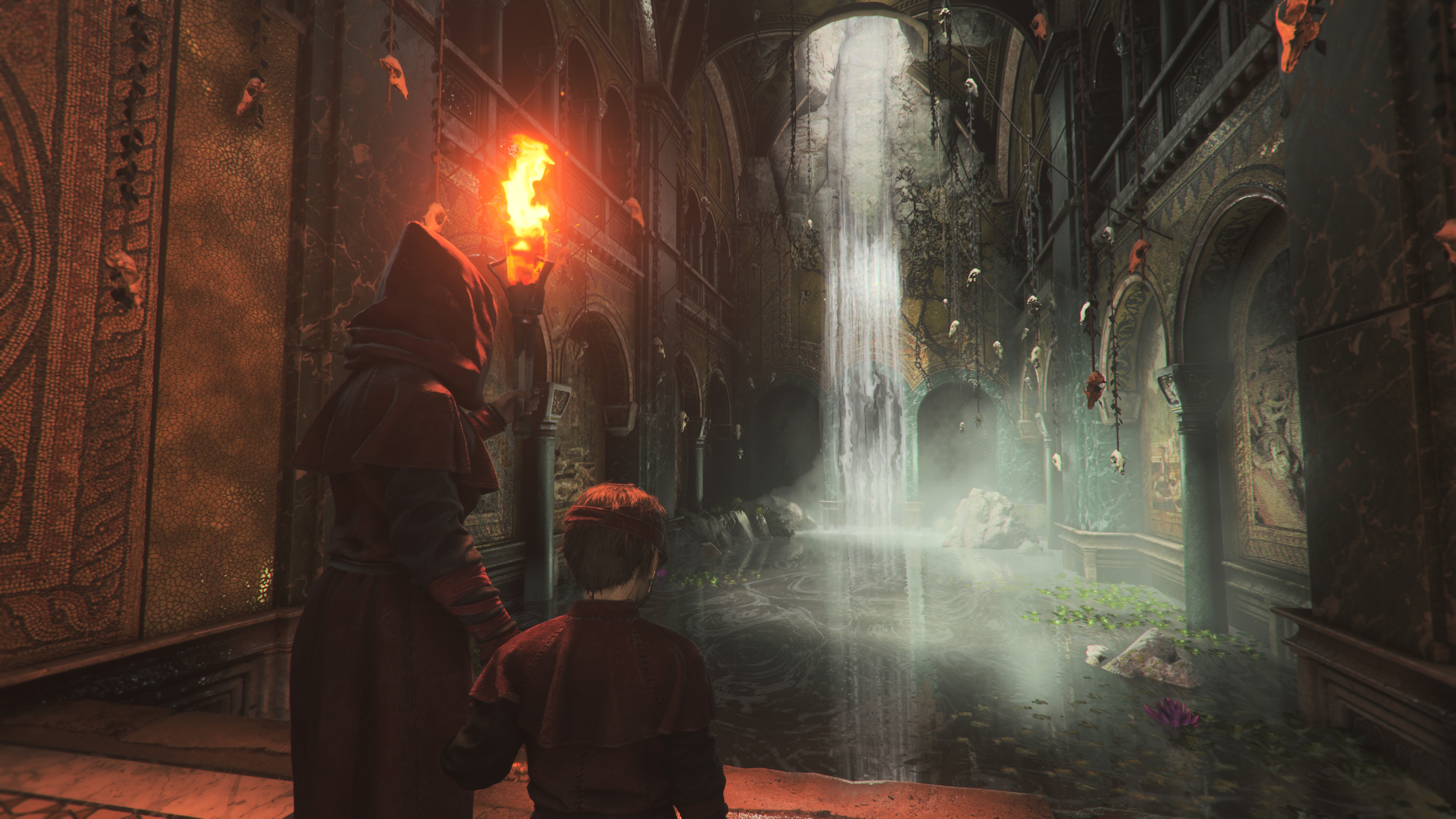
A Plague Tale: Innocence is still a fantastic, must-play game, but both its accessibility and approachability were held back by its modest budget and game design. I had high hopes that A Plague Tale: Requiem would make positive strides to improve this, and I'm happy to report that progress has been made. Requiem will not win awards for its accessibility features, but work has been done to make the experience more customizable for different players; more intelligent game design works in tangent with expanded gameplay to make A Plague Tale: Requiem more intuitive and approachable for all players.
Players have plenty of options for customizing the difficulty of A Plague Tale: Requiem, including the frequency of helpful tips and markers, the information density of the HUD, how various interactions work, and even specific options for reducing or even disabling reaction-based gameplay elements. There are also independent key and button binds for every control, options for customizing the sensitivity of aiming and movement, and plenty of other helpful settings of which players can take advantage.
A Plague Tale: Requiem supports multiple languages for text and a handful of alternate languages for audio, as well as in-depth and separate options to customize the language, information, visibility, and appearance of subtitles. The game's audio settings feature granular sliders for numerous audio sources. Unfortunately, there aren't accessibility options for vision-based disabilities like colorblind filters or a high contrast mode (especially for the menus), nor is there a dedicated accessibility section for other features and options that are becoming prevalent in other games. I also wish there were more options for customizing Requiem's graphics, but toggles for motion blur and chromatic aberration are appreciated.
Asobo Studio clearly worked on improving the accessibility of A Plague Tale: Requiem, but more can be done.
When it comes to how approachable A Plague Tale: Requiem is, I believe matters are even more positive. Fundamental elements of Requiem's game design have been improved and expanded over Innocence, making it far easier to jump into the game and understand how to succeed. Controls are better and provide more options for quickly and intuitively navigating between your various tools and abilities, the on-screen UI is well-designed and easy to read, and it's usually obvious how players can navigate the world and what general direction players need to go to progress.
For the moments when you're lost or a new mechanic is being introduced, A Plague Tale: Requiem does a fair job of providing clear information, with in-game tips from nearby characters, should you get stuck in an area. These tooltips and tutorials can be disabled or customized alongside HUD elements if a player should desire a more "immersive" experience, but it's good to see Requiem prioritize approachability in its game design.
Asobo Studio clearly worked on improving accessibility and approachability for its latest project, and it shows when you play. The advancements made benefit all manner of players but should also open the door for new players that may have struggled to play Innocence. I hope to see the talented studio continue to build on its skills with later games.
A Plague Tale: Requiem review — Should you play it?

A Plague Tale: Innocence was a surprise hit from Asobo Studio as its first attempt at an all-original game in many years. The title punched well above its weight for many, myself included, but it was still clear that Innocence didn't reach the scale or ambition of a "AAA" game. With A Plague Tale: Requiem, it feels like Asobo Studio is growing up alongside Amicia de Rune, with colossal advancements made across visuals, gameplay, scope, and accessibility.
A Plague Tale: Requiem isn't a perfect game, and there are several areas in which it can improve even further. It does, however, set the benchmark for how to do a sequel right. Requiem is immediately familiar to anyone who played Innocence, but every single facet of the game has evolved beyond its predecessor in some fashion. A Plague Tale: Requiem is far more than a jump in visual fidelity or an increase in the number of rats — it's larger, more approachable, more emotional, and a fitting conclusion to the arduous adventures of Amicia and Hugo. Minor concerns regarding visual or performance inconsistencies, or a lack of dynamism in the world, fail to meaningfully take away from the beautiful chaos of Requiem.
In 2019, players watched the innocence of two siblings of the tragic de Rune family be systematically stripped away by circumstances out of their control. In Requiem, their innocence is nothing more than a memory, and Amicia and Hugo must navigate a perpetually hostile world in order to, hopefully, find peace and contentment at the end. Humans, as always, are the real danger of the world, the Prima Macula continues to unleash armies of deadly rats upon humanity, and the truth is never quite what it seems in A Plague Tale: Requiem.
A Plague Tale: Requiem officially releases on Oct. 18, 2022, for Xbox Series X|S, PS5, Switch, PC, Xbox and PC Game Pass, and Xbox Cloud Gaming.

Zachary Boddy (They / Them) is a Staff Writer for Windows Central, primarily focused on covering the latest news in tech and gaming, the best Xbox and PC games, and the most interesting Windows and Xbox hardware. They have been gaming and writing for most of their life starting with the original Xbox, and started out as a freelancer for Windows Central and its sister sites in 2019. Now a full-fledged Staff Writer, Zachary has expanded from only writing about all things Minecraft to covering practically everything on which Windows Central is an expert, especially when it comes to Microsoft.
